Pros and Cons of AI in Education
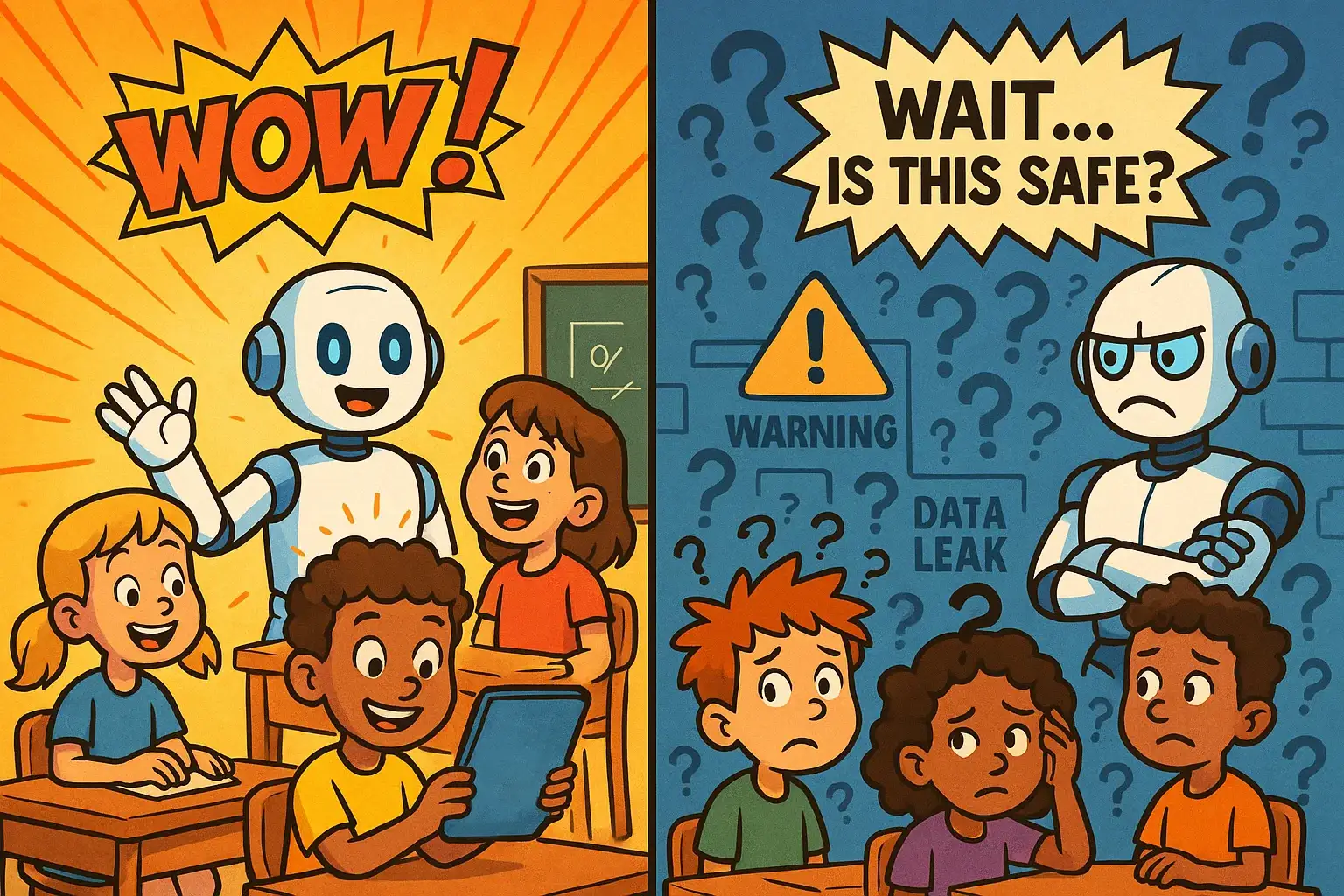
The integration of AI in education presents both remarkable opportunities and significant challenges that schools, teachers, and policymakers must carefully consider. From personalized learning experiences to concerns about human connection, AI in education represents a complex landscape of advantages and disadvantages that demands thoughtful examination.
Current applications of artificial intelligence in education span from adaptive learning platforms that adjust to individual student needs to automated grading systems that streamline administrative tasks. As the growing use of AI accelerates, understanding both the potential benefits and limitations becomes crucial for making informed decisions about technology integration in classrooms worldwide.
5 Key Benefits of Artificial Intelligence in Education
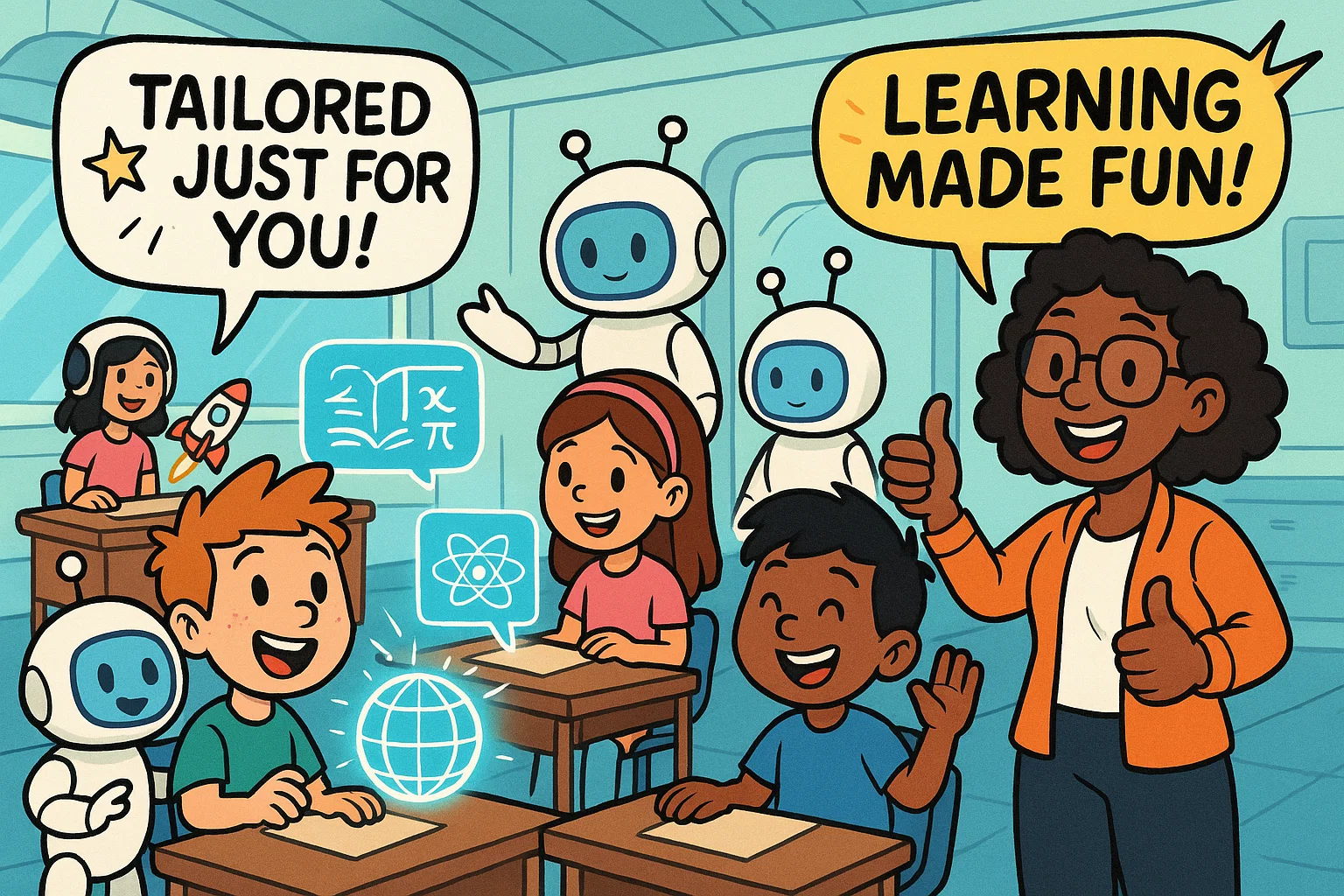
The advantages of AI in education extend far beyond simple automation, offering transformative possibilities for how students engage with learning materials and how educators deliver instruction.
Personalized Learning Experiences
AI can enhance student learning by creating truly individualized educational pathways. Adaptive learning systems analyze vast amounts of student data to personalize learning experiences, adjusting content difficulty, pacing, and teaching methods based on each learner’s unique needs and preferences.
For example, platforms like Carnegie Learning use data analytics to meet individual student needs by providing customized problem sets that adapt in real-time. When a student struggles with algebraic concepts, the AI-powered system may offer additional visual explanations or alternative problem-solving approaches, ensuring that each learner receives targeted support.
Research indicates that students using personalized AI systems show 20-30% improvement in learning outcomes compared to traditional one-size-fits-all approaches. This personalized learning by tailoring content to learning styles and abilities helps enhance student engagement while building confidence through appropriately challenging material.
Administrative Task Automation
One of the most immediate benefits involves how AI can help streamline administrative tasks, freeing educators to focus on what matters most: teaching and student interaction. AI systems can automate routine activities such as:
- Grading multiple-choice tests and even some essay assignments
- Lesson planning by suggesting curriculum-aligned resources
- Scheduling and attendance tracking
- Progress report generation
Teachers using automated grading tools report saving 3-5 hours per week, time they can redirect toward providing meaningful feedback and developing engaging classroom activities. This efficiency gain allows teachers and administrators to invest more energy in creative instruction and building relationships with students.
Improved Access for Students with Disabilities
AI can facilitate accessibility in unprecedented ways, creating inclusive learning environments for students with disabilities. AI technologies offer powerful assistive tools, including:
| Disability Type | AI Solution | Impact |
| Visual Impairment | Text-to-speech and image recognition | Converts written content to audio |
| Hearing Impairment | Real-time transcription and captioning | Provides immediate text conversion |
| Learning Differences | Adaptive interfaces and content modification | Adjusts presentation format |
| Motor Limitations | Voice-controlled navigation and dictation | Enables hands-free interaction |
These AI-driven solutions help improve accessibility by removing traditional barriers that may have prevented full classroom participation, ensuring opportunities for students regardless of their physical or cognitive challenges.
Real-Time Feedback and Assessment
Unlike traditional assessment methods that may take days or weeks to return results, AI can provide real-time feedback that helps students course-correct immediately. AI platforms continuously monitor student performance, offering instant insights into areas of strength and weakness.
This immediate feedback loop means students don’t practice incorrect methods for extended periods. Instead, they receive guidance precisely when they need to learn from mistakes, leading to more efficient skill development and reduced frustration.
Scalable Tutoring Support
AI-powered tutoring systems can provide real-time support to unlimited numbers of students simultaneously, addressing the challenge of providing individualized attention in large classrooms or underserved communities.
Virtual tutoring platforms like Squirrel AI offer 24/7 availability, helping students who need additional support outside regular school hours. This scalability means that even schools with limited resources can enhance the learning experience through consistent, patient, and knowledgeable AI tutors that adapt to each student’s learning pace.
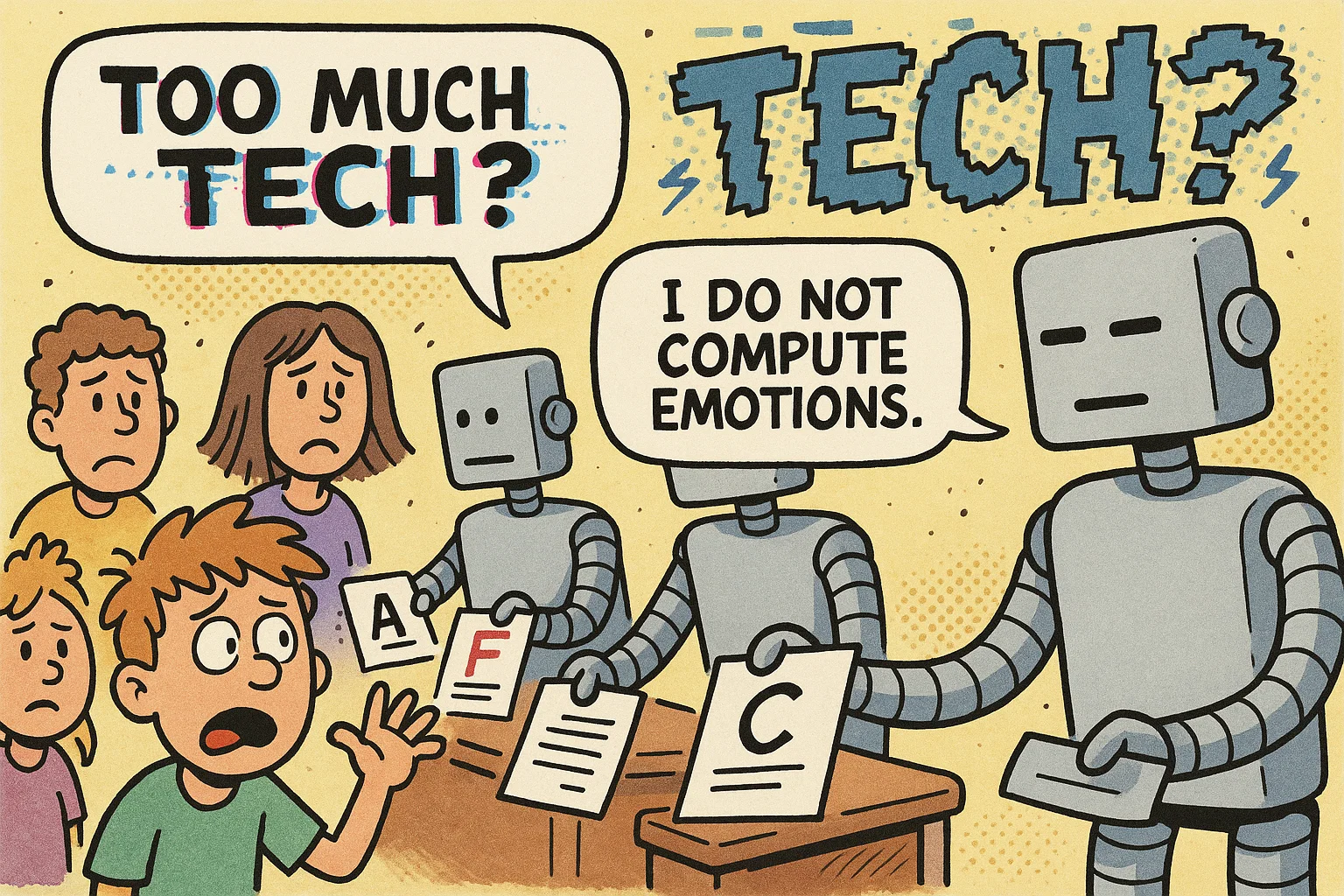
5 Main Drawbacks of AI in Education
While the potential benefits of ai are substantial, the disadvantages of AI in education present serious concerns that educators and policymakers must address thoughtfully.
Lack of Emotional Intelligence
Perhaps the most significant limitation lies in AI’s inability to recognize and respond to emotional and social cues that are fundamental to effective teaching. Human intelligence encompasses empathy, intuition, and emotional support that AI systems simply cannot replicate.
When a student feels frustrated, anxious, or disengaged, skilled educators can recognize these emotional states and adjust their approach accordingly. They might offer encouragement, modify instruction methods, or provide emotional support that helps students overcome learning barriers. AI tools, regardless of their sophistication, lack this crucial emotional awareness that often determines educational success.
This limitation becomes particularly evident in subjects requiring critical thinking and problem-solving skills, where students benefit from nuanced discussions and emotional encouragement that foster intellectual risk-taking and creative exploration.
Data Privacy and Security Issues
The extensive collection of student data raises significant privacy concerns that schools must carefully navigate. AI platforms typically gather detailed information about learning patterns, performance metrics, and even behavioral data to enhance the learning experience.
However, this data collection creates potential vulnerabilities:
- Unauthorized access to sensitive educational records
- Third-party data sharing without proper consent
- Long-term data storage implications for students’ futures
- Potential misuse of behavioral and performance analytics
Schools must ensure that AI implementations comply with privacy regulations like FERPA while establishing clear policies about data ownership, retention, and usage rights.
Algorithmic Bias and Inequity
AI systems inherit biases present in their training data, potentially leading to unfair treatment of certain student populations. Historical educational data may reflect existing inequalities, causing AI algorithms to perpetuate or amplify discriminatory patterns.
For instance, if an AI grading system is trained primarily on essays from students in well-funded districts, it may unfairly penalize writing styles or cultural references common among students from different socioeconomic backgrounds. This algorithmic bias can inadvertently create barriers for students who are already facing educational disadvantages.
Reduced Human Interaction
As AI-driven tools become more prevalent in classrooms, there’s growing concern about decreased human interaction between students and educators, as well as among peers. The social aspects of learning—collaboration, debate, and relationship-building—are essential components of educational development that AI cannot effectively replace.
Students need opportunities to develop communication skills, emotional intelligence, and collaborative problem-solving abilities through human interaction. Over-reliance on AI technologies may inadvertently isolate learners and reduce the social learning experiences that contribute to well-rounded development.
Overreliance on Technology and critical thinking development
When schools become too dependent on AI tools, they create vulnerabilities that can significantly disrupt learning. Technical failures, internet outages, or software glitches can leave educators and students without essential resources, particularly if they haven’t maintained traditional teaching skills and materials as backup options.
Additionally, this dependency may limit critical thinking development if students become accustomed to AI-provided answers rather than developing independent reasoning abilities. Students need to maintain problem-solving skills that don’t require technological assistance.
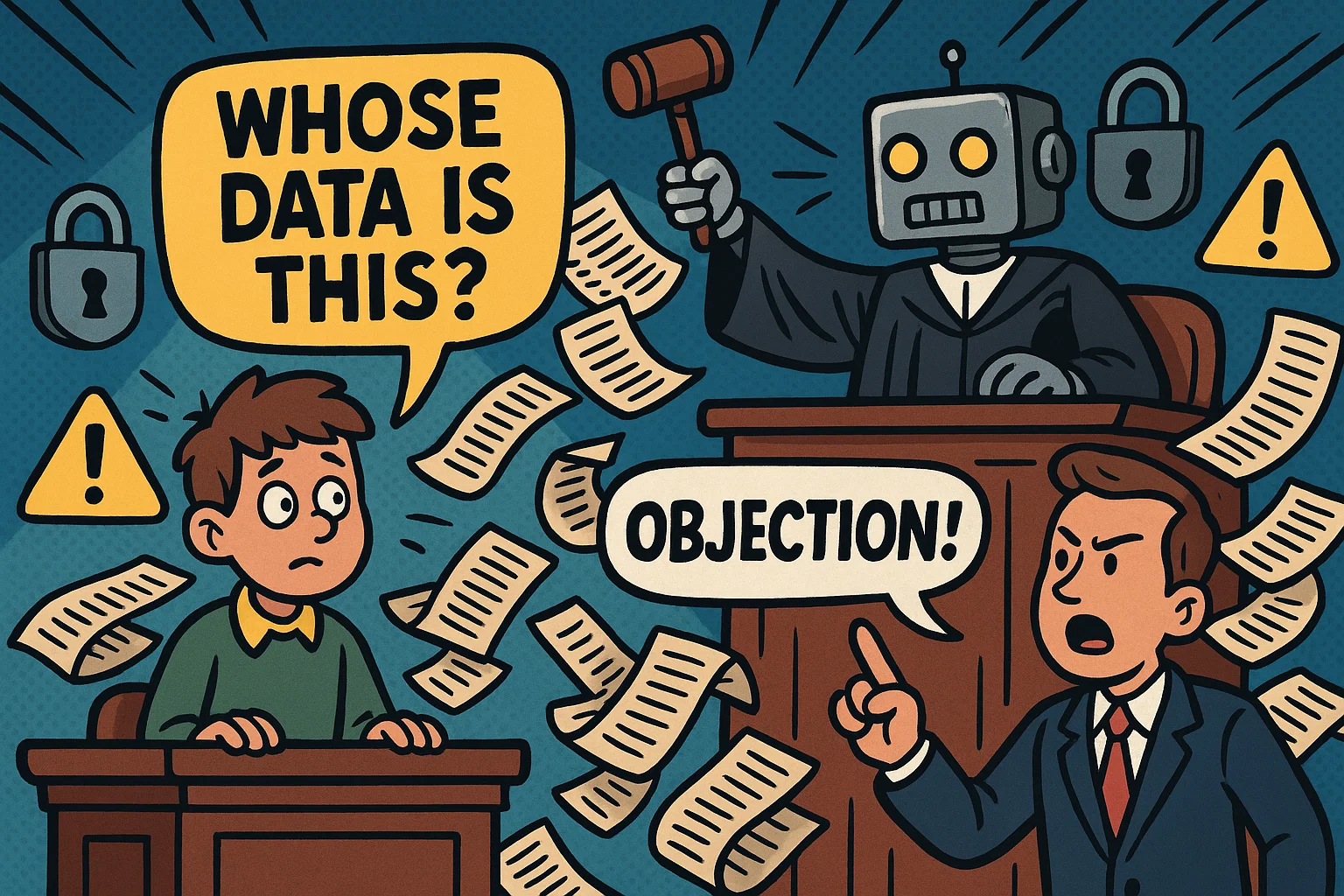
Privacy, Ethics, and Regulation Challenges
The use of AI in classrooms introduces complex legal and ethical considerations that educational institutions must navigate carefully.
Student Data Privacy Risks
AI in schools requires extensive data collection to function effectively, creating unprecedented privacy challenges. The vast amounts of student data collected include:
- Learning behavior patterns and engagement metrics
- Assessment scores and academic performance histories
- Social interaction data from collaborative platforms
- Biometric information from attention-monitoring systems
- Personal preferences and learning style profiles
Ethical considerations around this data collection include:
| Privacy Concern | Potential Risk | Mitigation Strategy |
| Data Retention | Long-term profile creation | Clear deletion timelines |
| Third-Party Access | Commercial data exploitation | Strict vendor agreements |
| Consent Issues | Inadequate student/parent awareness | Transparent disclosure policies |
| Data Security | Breaches exposing sensitive information | Robust cybersecurity measures |
Transparency and Accountability in AI Decisions
The “black box” nature of many AI systems creates accountability challenges when algorithmic decisions affect student outcomes. Students and educators deserve to understand how AI reaches conclusions about:
- Academic performance evaluations
- Learning pathway recommendations
- Resource allocation decisions
- Disciplinary suggestions
Schools must ensure that AI systems provide explainable reasoning for their recommendations, allowing educators to verify and override algorithmic decisions when necessary. This transparency becomes particularly crucial in high-stakes situations like college admissions or special education placements.
Legal Gaps and Global Regulatory Differences
Current educational regulations were not designed to address AI technologies, creating legal uncertainties that schools must navigate without clear guidance. Key regulatory gaps include:
United States: FERPA provides some data protection, but doesn’t specifically address AI applications or algorithmic decision-making in education.
European Union: GDPR offers stronger privacy protections and requires explicit consent for automated decision-making, but implementation in educational contexts remains unclear.
Asia-Pacific: Countries like Singapore and South Korea are developing AI-specific educational guidelines, while others lag in regulatory development.
This regulatory patchwork means that schools must develop internal policies that exceed current legal minimums while preparing for evolving compliance requirements.
Long-Term Impact of Artificial Intelligence on Learning Outcomes
Evaluating whether artificial intelligence has the potential to genuinely improve educational outcomes requires examining both immediate measurable effects and longer-term developmental implications.
Effects on Critical Thinking Development
One of the most significant concerns about AI in education involves its potential impact on critical thinking skills development. While AI can track student progress and provide immediate feedback, there are growing questions about whether this efficiency comes at the cost of deeper intellectual development.
Potential Negative Impacts:
- Students may become accustomed to receiving quick answers rather than wrestling with complex problems
- AI writing tools could reduce practice in developing original arguments and creative expression
- Automated feedback might lack the nuanced questioning that promotes deeper analysis
- Pattern recognition by AI systems could lead to formulaic thinking approaches
Potential Positive Impacts:
- AI can also present students with diverse perspectives and challenge assumptions
- Personalized questioning can scaffold critical thinking and problem-solving skills development
- Real-time feedback allows students to refine reasoning processes more effectively
- Access to vast information resources can support more comprehensive analysis
Research suggests that the impact of AI on critical thinking depends heavily on implementation approach. When AI tools are used to supplement rather than replace human-guided inquiry, they can enhance student analytical capabilities.
Influence on Student Motivation and Autonomy
The relationship between AI technologies and student motivation presents a complex picture of both enhancement and potential dependency concerns.
Motivational Benefits: AI-powered systems can increase student engagement through:
- Gamification elements that make learning more enjoyable
- Personalized challenges that maintain optimal difficulty levels
- Immediate recognition of achievements and progress
- Adaptive content that prevents frustration from material that’s too difficult or too easy
Autonomy Concerns: However, students need to develop self-regulation skills that excessive AI guidance might undermine:
- Dependency on external validation rather than internal motivation
- Reduced practice in setting personal learning goals
- Limited experience with productive struggle and persistence
- Decreased ownership of the learning process
Successful integration of AI requires a careful balance, using technology to support rather than replace student agency in learning decisions.
Scalability and Equity Issues
While AI offers tremendous potential for democratizing high-quality education, significant barriers prevent equal access across different populations and regions.
Resource Disparities:
- Infrastructure requirements for AI platforms favor well-funded institutions
- Teacher training needs create additional costs that burden under-resourced schools
- Ongoing maintenance and updates require sustained financial commitment
- Rural or remote areas may lack reliable internet access for AI-driven tools
Cultural and Linguistic Barriers:
- AI systems trained primarily on English content may not serve multilingual populations effectively
- Cultural biases in algorithms can disadvantage students from non-majority backgrounds
- Learning style assumptions may not align with diverse cultural approaches to education
To address these challenges, policymakers and educators must prioritize equitable access to AI technologies while recognizing that technology alone cannot solve deeper educational inequality issues.
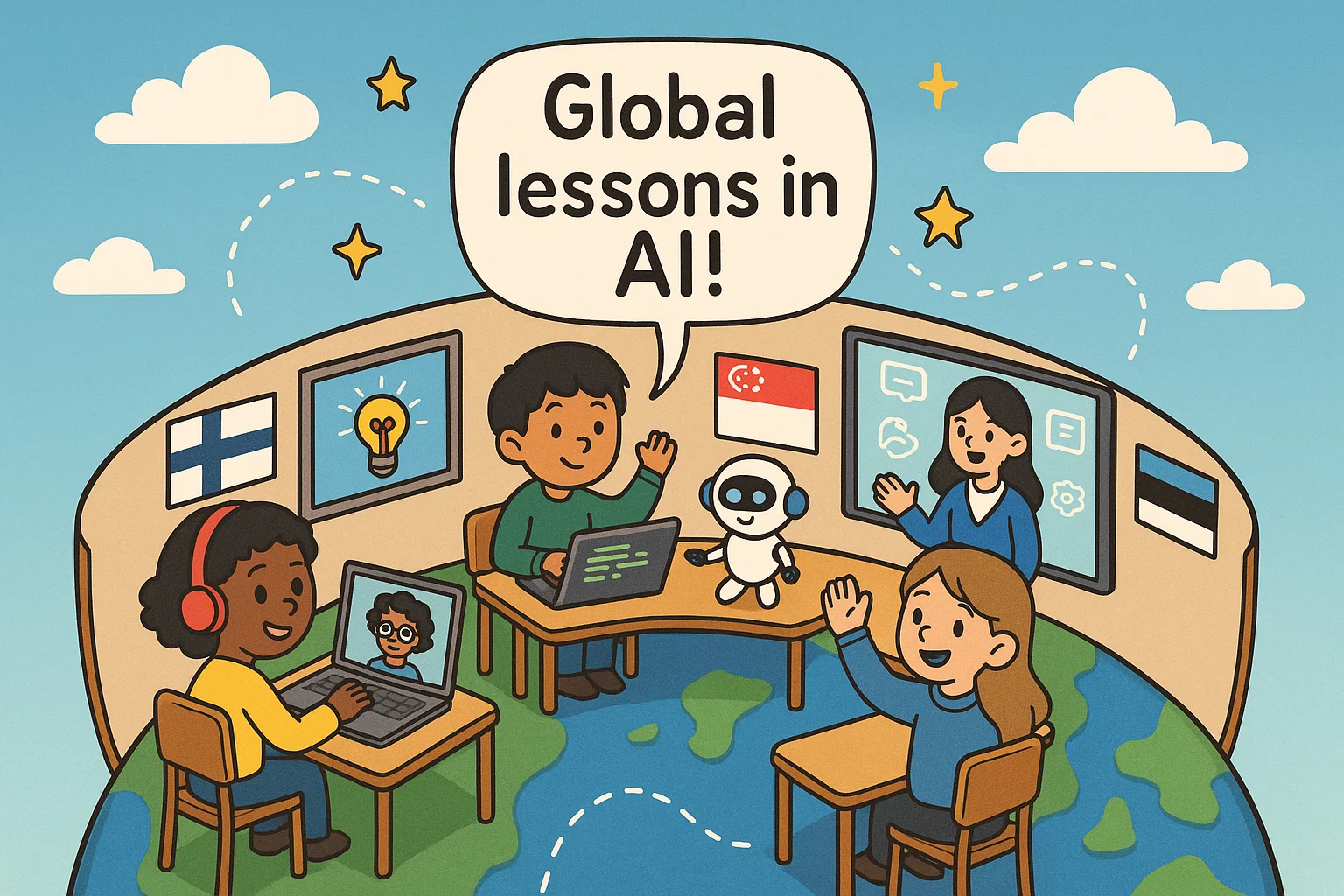
AI in Education Case Studies and Examples
Real-world implementations of artificial intelligence in educational settings provide valuable insights into both the successes and challenges of AI integration.
Global AI-Powered Classroom Initiatives
Finland’s National AI Education Program: Finland has implemented comprehensive AI in education initiatives that focus on both teaching about AI and using AI in education to enhance learning outcomes. Their approach emphasizes ethical considerations and human-centered design, with measurable improvements in student engagement and personalized learning effectiveness.
Singapore’s AI for Students Programme: Singapore’s systematic approach to AI in schools includes teacher training, infrastructure development, and curriculum integration. Early results show 18% improvement in mathematics achievement when adaptive learning systems are properly implemented with human oversight.
Estonia’s Digital Learning Revolution: Estonia has integrated AI across their national education system, focusing on programming education and AI-powered administrative efficiency. Their experience demonstrates how small nations can successfully transform education through strategic technology adoption.
Academic Research and Pilot Programs
Stanford’s AI4ALL Education Initiative: This research program examines how AI can enhance learning while promoting diversity in AI development. Their studies provide crucial insights into preventing algorithmic bias and ensuring equitable access to AI tools.
MIT’s Personalized Learning Project: Researchers have developed AI systems that adapt not just content but teaching methodology to individual learning preferences. Results suggest that personalized learning by tailoring both content and instructional approach can improve outcomes by up to 40%.
University of Edinburgh’s AI Ethics in Education Study: This longitudinal research examines the long-term effects of AI in the classroom on student development, teacher satisfaction, and educational equity. Preliminary findings emphasize the importance of maintaining human connection while leveraging technological advantages.
Frequently Asked Questions
What are the key benefits of AI in education compared to traditional teaching methods?
The benefits of AI in education are transformative and wide-ranging. AI helps create personalized learning experiences through learning by adapting content to individual student needs, automates routine administrative tasks, and provides 24/7 tutoring support. AI in education also improves accessibility for students with disabilities and offers real-time feedback that traditional methods cannot match. The advantages of artificial intelligence include scalable instruction delivery and data-driven insights that help educators make informed decisions about student progress.
How is using artificial intelligence changing the educational landscape?
Education is rapidly transforming as schools integrate AI technologies across multiple areas. Using artificial intelligence enables institutions to use AI tools for everything from personalized curriculum delivery to predictive analytics for student success. AI also streamlines grading processes and helps teachers identify learning gaps more quickly than ever before. Artificial intelligence continues to evolve, offering new possibilities for immersive learning experiences and adaptive assessment methods.
Will AI replace teachers completely in the future?
While AI is here to stay in educational settings, AI will not replace human educators entirely. Teachers provide emotional intelligence, creativity, mentorship, and social connection that AI has the potential to support but cannot replicate. AI helps teachers become more effective by handling routine tasks, but human educators remain essential for fostering critical thinking, emotional development, and complex problem-solving skills that require human insight and empathy.
What are the main disadvantages of artificial intelligence in education?
The disadvantages of artificial intelligence include significant privacy concerns, potential algorithmic bias, and reduced human interaction in learning environments. AI in education also raises questions about over-dependence on technology and the risk of diminishing students’ ability to think independently. The limitations of AI become apparent when dealing with emotional support, creative instruction, and nuanced social learning that requires human connection and understanding.
How should schools approach implementing AI tools for the first time?
Schools that haven’t tried AI should start with pilot programs in specific subject areas before broader implementation. AI has the potential to significantly improve learning outcomes, but successful integration requires proper teacher training, clear privacy policies, and ongoing evaluation of effectiveness. AI also requires reliable technology infrastructure and technical support to ensure consistent functionality and positive learning experiences.
What does the future hold for AI in education?
As artificial intelligence continues to advance, educational institutions will likely see even more sophisticated applications of AI tools. The limitations of AI will gradually decrease as technology improves, but the importance of maintaining human-centered approaches to education will remain constant. AI is here to stay, and schools that thoughtfully integrate these technologies while preserving essential human elements of teaching will likely see the greatest benefits of AI in education.
